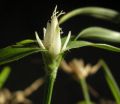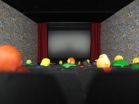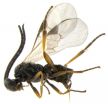(Press-News.org) This news release is available in German.
Meiosis is not like another: Gabriela Cabral and Peter Schlögelhofer at the Max F. Perutz Laboratories (MFPL) of the University of Vienna and the Medical University of Vienna dived into the process of meiosis in specific plant species and revealed that these plants display an inversion of the standard meiotic phases. The researchers describe the detailed mechanisms in the scientific journal Nature Communications.
Meiosis is the two-step series of cell divisions that make sexual reproduction and genetic diversity possible.The coordination of the two meiotic chromosomal divisions (the reductional followed by the equational division) gives meiosis its distinctive characteristics: a reduction in the number of chromosomes by half, accompanied by mixing of parental chromosomes, and swapping of regions between homologous chromosomes (crossing over).
Some species have developed their own strategy to ensure genetic diversity in their offspring with a variation of the "standard procedure", as PhD student Gabriela Cabral and group leader Peter Schlögelhofer at the Max F. Perutz Laboratories (MFPL) now show. The researchers examined meiosis in Rhynchospora pubera and R. tenuis – plants that are widely distributed in Gabriela Cabral's home country Brazil.
"I started studying meiosis in these species already in the lab in Brazil and 'imported' the project to Austria in 2009 as part of my master project", says first author Gabriela Cabral. In the meantime, she switched to the Dammermann group at MFPL and works now as a PhD student on the model organism C. elegans, a nematode worm.
And we've come full circle C. elegans displays a chromosome type that is also present in the two plant species: During somatic cell divisions, their holocentric chromosomes have the unusual property of attaching to spindle microtubules along their entire length in contrast to the well-studied monocentric chromosomes in e.g. humans with a clearly localized attachment site (kinetochore) for spindle microtubules. Spindle microtubules are responsible for segregating chromosomes during cell division.
"Holocentric chromosomes create unique problems during meiosis that organisms with monocentric chromosomes do not face: They have to find another way to distribute the chromosomes correctly", explains Peter Schlögelhofer. "The plant species in our study have a special strategy on how to solve the problem: They show an inversion of the canonical meiotic sequence, with the equational division preceding the reductional."
Segregating sister chromatids during the first meiotic division represents an atypical process when compared to regular meiosis, but the real challenge is to orderly distribute homologous non-sister chromatids during the second, subsequent meiotic division.
Together with their colleagues at the Federal University of Pernambuco in Brazil and the Leibniz Institute of Plant Genetics and Crop Plant Research in Germany, the researchers at MFPL show that in the investigated plant species the homologous non-sister chromatids are associated with thin chromatin threads prior to the second meiotic division. These connections seem to provide sufficient force to allow proper orientation and disjunction during the second division.
In conclusion, Gabriela Cabral and Peter Schlögelhofer, in collaboration with the researchers from Germany and Brazil, not only present robust evidence for inverted meiosis in plant species, but they also provide the first in-depth analysis on their meiotic behavior.
INFORMATION:
Publication in Nature Communications:
Gabriela Cabral, André Marques, Veit Schubert, Andrea Pedrosa-Harand and Peter Schlögelhofer: Chiasmatic and achiasmatic inverted meiosis of plants with holocentric chromosomes.
In: Nature Communications (October 2014). DOI: http://dx.doi.org/10.1038/ncomms6070
The Max F. Perutz Laboratories (MFPL) are a center established by the University of Vienna and the Medical University of Vienna to provide an environment for excellent, internationally recognized research and education in the field of Molecular Biology. On average, the MFPL host 60 independent research groups, involving more than 500 people from 40 nations.
The University of Vienna, founded in 1365, is one of the oldest and largest universities in Europe. About 9,500 employees, 6,700 of who are academic employees, work at 15 faculties and four centres. This makes the University of Vienna Austria's largest research and education institution. About 92,000 national and international students are currently enrolled at the University of Vienna. With more than 180 degree programmes, the University offers the most diverse range of studies in Austria. The University of Vienna is also a major provider of continuing education. In 2015, the Alma Mater Rudolphina Vindobonensis celebrates its 650th Anniversary. http://www.univie.ac.at
Meiotic cell division 'the other way round'
New details on meiosis in organisms with holocentric chromosomes
2014-10-29
ELSE PRESS RELEASES FROM THIS DATE:
A mechanism that allows a differentiated cell to reactivate as a stem cell revealed
2014-10-29
One kind of stem cell, those referred to as 'facultative', form part—together with other cells—of tissues and organs. There is apparently nothing that differentiates these cells from the others. However, they have a very special characteristic, namely they retain the capacity to become stem cells again. This phenomenon is something that happens in the liver, an organ that hosts cells that stimulate tissue growth, thus allowing the regeneration of the organ in the case of a transplant. Knowledge of the underlying mechanism that allows these cells to retain this ...
Cinema-like environment helps audiences immerse in movies even on small screens & displays
2014-10-29
If the surroundings are designed to be sufficiently stimulating, even a simple computer screen is enough to generate an intense cinematic experience. After observing some 300 study subjects, researchers at the Institute of Psychology of Johannes Gutenberg University Mainz (JGU) in Germany concluded that the angle of viewing does not play a vital role in the cinematic experience, thus disproving various hypotheses. According to the results of their study, the presence of so-called contextual visual cues plays a greater role in actually drawing viewers into a movie. When ...
Projecting a robot's intentions
2014-10-29
In a darkened, hangar-like space inside MIT's Building 41, a small, Roomba-like robot is trying to make up its mind.
Standing in its path is an obstacle — a human pedestrian who's pacing back and forth. To get to the other side of the room, the robot has to first determine where the pedestrian is, then choose the optimal route to avoid a close encounter.
As the robot considers its options, its "thoughts" are projected on the ground: A large pink dot appears to follow the pedestrian — a symbol of the robot's perception of the pedestrian's position in space. ...
Walking workstations improve physical and mental health, builds healthier workplace
2014-10-29
Walking workstations can improve not only physical, but also mental health during the workday, a new study released this week found. The research was conducted by faculty and student researchers from the Department of Psychology in the School of Science at Indiana University-Purdue University Indianapolis (IUPUI).
With growing concerns regarding obesity in the United States, Michael Sliter, assistant professor of psychology, hopes the study encourages employers to examine methods to assist workers in in healthy living.
"We found that the walking workstations, regardless ...
Go straight and publish: From Barcode of Life Data Systems to scholarly publishing systems
2014-10-29
An innovative workflow reveals new research potential of the Barcode of Life Data Systems (BOLD). A recently published article in the Biodiversity Data Journal (BDJ) used specimen records downloaded from BOLD in tabular format and imported these into a human-readable text developed in manuscript within the Pensoft Writting Tool (PWT). Data were used to study the species distributions of ten Nearctic species of braconid wasps from the Microgastrinae subfamily.
BOLD is originally designed to support the generation and application of DNA barcode data. However, the repository ...
Saving lots of computing capacity with a new algorithm
2014-10-29
The control of modern infrastructure such as intelligent power grids needs lots of computing capacity. Scientists of the Interdisciplinary Centre for Security, Reliability and Trust (SnT) at the University of Luxembourg have developed an algorithm that might revolutionise these processes. With their new software the SnT researchers are able to forego the use of considerable amounts of computing capacity, enabling what they call micro mining. Their achievements, which the team headed by Prof. Yves Le Traon published in the International Conference on Software Engineering ...
NYU research: Tourism as a driver of illicit drug use, HIV risk in the DR
2014-10-29
The Caribbean has the second highest global human immunodeficiency virus (HIV) prevalence in the world outside of Sub-Saharan Africa, with HIV/AIDS as leading cause of death among people aged 20–59 years within the region. Particularly hard-hit are the Dominican Republic (DR) and Haiti, on the island of Hispaniola, accounting for approximately 70% of all people living with HIV in the Caribbean region.
Insufficient attention has been paid to the intersection of drugs and tourism as contributing factors for the region's elevated HIV/AIDS risk. Caribbean studies ...
Prenatal phthalate exposures and anogenital distance in Swedish boys
2014-10-29
The first study to examine prenatal exposure to the phthalate DiNP finds it is associated with a shorter anogenital distance (AGD) in Swedish boys at the age of 21 months. These findings raise concern since animal research has linked DiNP exposure to a shorter AGD, and studies on humans have related shorter AGD to male genital birth defects as well as impaired reproductive function in adult males, and the levels of DiNP metabolites in humans are increasing globally.
Background
Phthalates are used as plasticizers in soft polyvinyl chloride (PVC) and found in a large ...
Largest ever dataset of individual deaths in Africa & SE Asia reveals changing health
2014-10-29
More than 110,000 individual deaths and their causes across 13 countries, including Ghana, South Africa, Kenya, Bangladesh and Vietnam, are contained in the new INDEPTH dataset. The data, collected by hundreds of researchers over two decades, are the first meaningful community-based information about cause of death in countries where individual deaths are not recorded automatically by national governments.
The INDEPTH cause of death findings are published in a special issue of the journal Global Health Action, which is fully open access. There are six multisite papers ...
Aortic valve replacement appears safe, effective in very elderly patients
2014-10-29
Chicago, October 29, 2014 – Aortic valve replacement (AVR) can safely be used to treat severe aortic stenosis in patients age 90 years and older and is associated with a low risk of operative stroke and mortality, according to a study in the November 2014 issue of The Annals of Thoracic Surgery.
Key points
Aortic valve replacement appears to be safe and effective for patients over age 90 years with severe aortic stenosis.
Four out of five (81.3%) patients were alive 1 year following AVR.
TAVR had similar rates of morbidity and mortality as traditional surgical ...
LAST 30 PRESS RELEASES:
Ticking time bomb: Some farmers report as many as 70 tick encounters over a 6-month period
Turning garden and crop waste into plastics
Scientists discover ‘platypus galaxies’ in the early universe
Seeing thyroid cancer in a new light: when AI meets label-free imaging in the operating room
Neutrophil-to-lymphocyte ratio may aid risk stratification in depressive disorder
2026 Seismological Society of America Annual Meeting
AI-powered ECG analysis offers promising path for early detection of chronic obstructive pulmonary disease, says Mount Sinai researchers
GIMM uncovers flaws in lab-grown heart cells and paves the way for improved treatments
Cracking the evolutionary code of sleep
Medications could help the aging brain cope with surgery, memory impairment
Back pain linked to worse sleep years later in men over 65, according to study
CDC urges ‘shared decision-making’ on some childhood vaccines; many unclear about what that means
New research finds that an ‘equal treatment’ approach to economic opportunity advertising can backfire
Researchers create shape-shifting, self-navigating microparticles
Science army mobilizes to map US soil microbiome
Researchers develop new tools to turn grain crops into biosensors
Do supervised consumption sites bring increased crime? Study suggests that’s a myth
New mass spec innovation could transform research
Maternal nativity, race, and ethnicity and infant mortality in the US
Migration-related trauma among asylum seekers exposed to the migrant protection protocols
Jupiter’s moon Europa has a seafloor that may be quiet and lifeless
SwRI upgrades nuclear magnetic resonance laboratory for pharmaceutical R&D
House sparrows in northern Norway can help us save other endangered animals
Crohn's & Colitis Foundation survey reveals more than 1/3 of young adults with IBD face step therapy insurance barriers
Tethered UAV autonomous knotting on environmental structures for transport
Decentralized social media platforms unlock authentic consumer feedback
American Pediatric Society announces Vanderbilt University School of Medicine as host institution for APS Howland Visiting Professor Program
Scientists discover first method to safely back up quantum information
A role for orange pigments in birds and human redheads
Pathways to net-zero greenhouse gas emissions for Southeast Asia
[Press-News.org] Meiotic cell division 'the other way round'New details on meiosis in organisms with holocentric chromosomes





